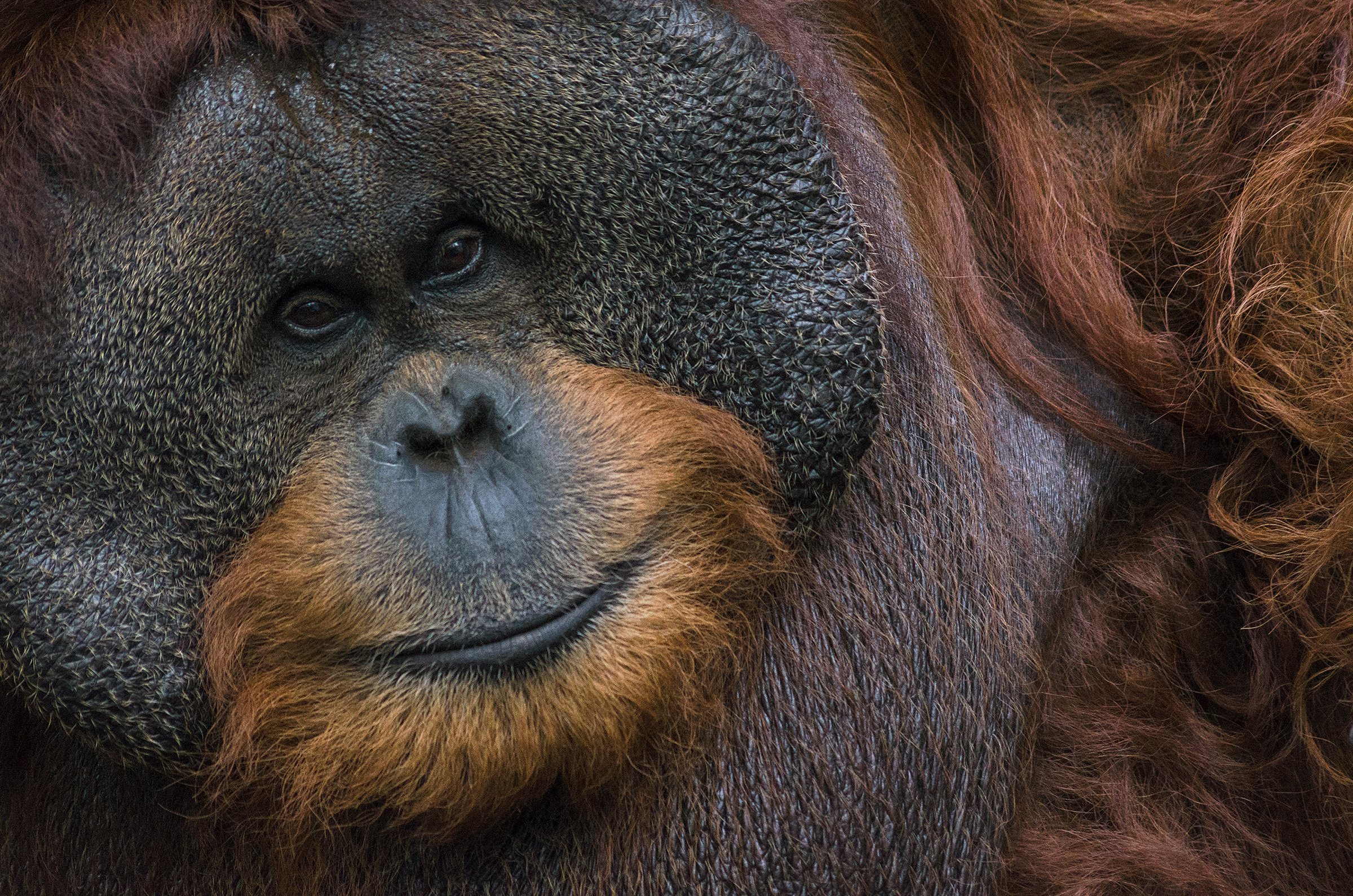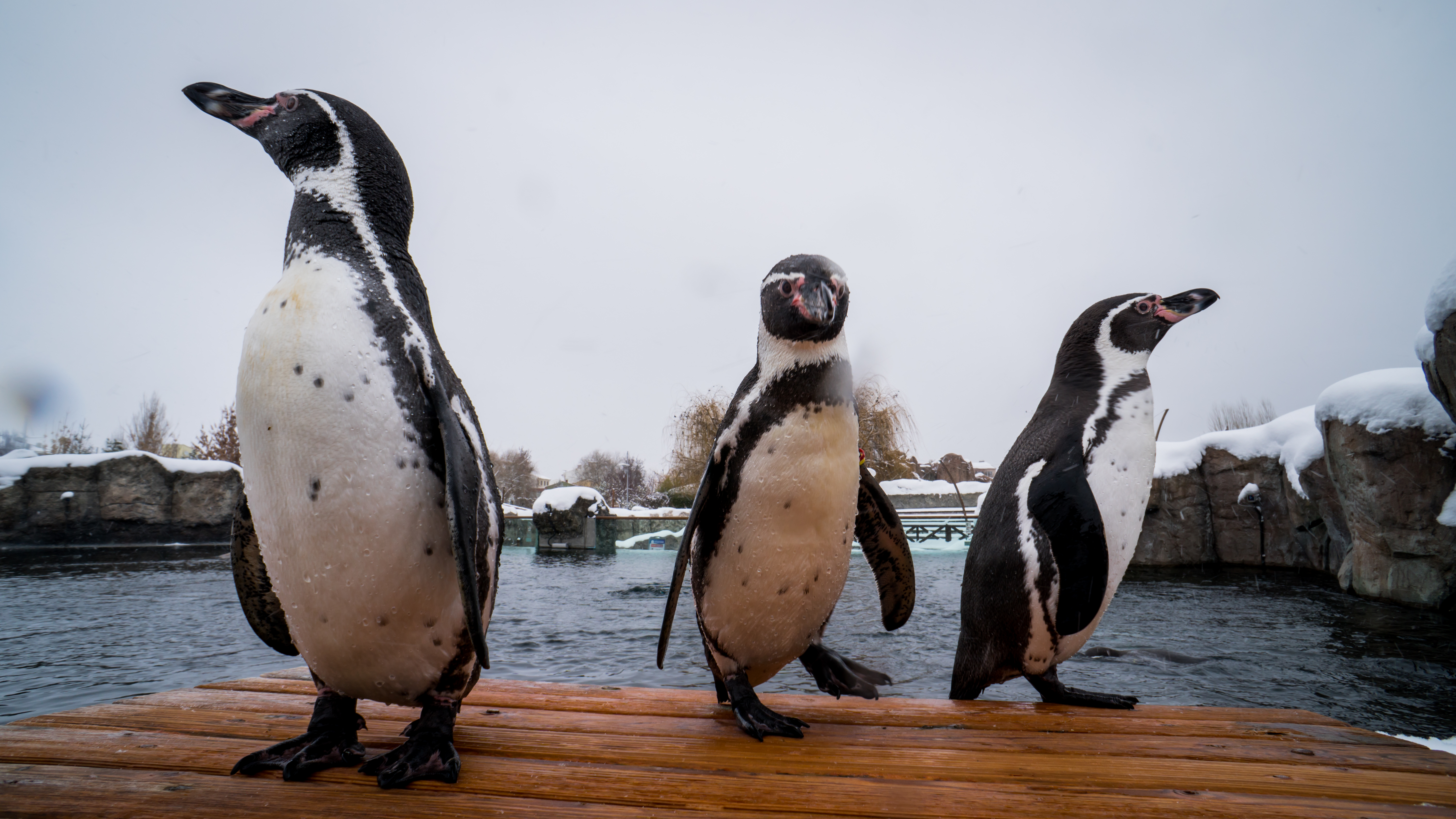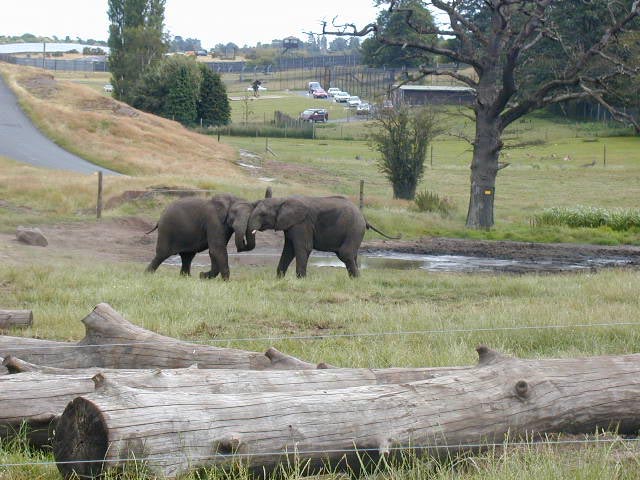|
Secret Life Of The Zoo
''The Secret Life of the Zoo'' is a British documentary programme produced by Blast! Films on behalf of Channel 4. The series is filmed on location at Chester Zoo in the North West of England, and focuses on the behaviour of the animals at the zoo and their relationships with the keepers. The first five series were narrated by Olivia Colman. Actress Tamsin Greig took over narration from the sixth series. Production The series gives viewers behind the scenes access to Chester Zoo's 21,000 animals and the people who work there. The zoo's keepers are interviewed in each episode about the various animals and incidents. Head of programmes at Blast!, Nick Hornby explained that as they wanted to tell the story from the animals' perspectives, they did not want the bars of the cages to be in shot, so they placed fixed cameras in the various enclosures. The first series was filmed over 10 months. The series was originally narrated by Olivia Colman. Tamsin Greig took over from October 2018. ... [...More Info...] [...Related Items...] OR: [Wikipedia] [Google] [Baidu] |
Olivia Colman
Sarah Caroline Sinclair ( Colman; born 30 January 1974), known professionally as Olivia Colman, is an English actress. Known for her comedic and dramatic roles in film and television, she has received various accolades, including an Academy Award, a British Academy Film Award, two Emmy Awards, three British Academy Television Awards and three Golden Globe Awards. A graduate of the Bristol Old Vic Theatre School, Colman's breakthrough came in the Channel 4 sitcom ''Peep Show'' (2003–2015). Her other comedic roles on television include ''Green Wing'' (2004–2006), ''That Mitchell and Webb Look'' (2006–2008), '' Beautiful People'' (2008–2009), '' Rev.'' (2010–2014), ''Flowers'' (2016–2018), ''Fleabag'' (2016–2019) and '' Heartstopper'' (2022). Colman received the BAFTA Award for Best Female Comedy Performance for the comedy programme ''Twenty Twelve'' (2011–2012) and Best Supporting Actress for the crime programme ''Accused'' (2012). She was acclaimed for her pe ... [...More Info...] [...Related Items...] OR: [Wikipedia] [Google] [Baidu] |
Rare Species Conservation Centre
The Rare Species Conservation Centre (RSCC) was a conservation centre and zoological gardens situated just outside Sandwich in Kent, England, operated by The Rare Species Conservation Trust, a UK registered charity. Its purpose was to educate visitors and create awareness of the plight of some of the world’s lesser-known rare and endangered species of animal. It was home to rare and unusual animals. It closed due to lack of funds on 31 August 2015. History The RSCC was created in 2006, having formerly been a small children’s zoo called The Monkey Rainforest which was home to species of lemurs, cats, birds, reptiles, and other creatures. By 2010, the park struggled to keep itself open year-round, and announced it would no longer support daily admission. It would re-open in July 2011, only to close once again in Summer of 2011. In 2014 however, the site re-opened once again, now with new species on display, such as tarsiers and cuscus. However, in 2015, it could no longer fi ... [...More Info...] [...Related Items...] OR: [Wikipedia] [Google] [Baidu] |
Bornean Orangutan
The Bornean orangutan (''Pongo pygmaeus'') is a species of orangutan endemic to the island of Borneo. Together with the Sumatran orangutan (''Pongo abelii'') and Tapanuli orangutan (''Pongo tapanuliensis''), it belongs to the only genus of great apes native to Asia. Like the other great apes, orangutans are highly intelligent, displaying tool use and distinct cultural patterns in the wild. Orangutans share approximately 97% of their DNA with humans. Also called mias by the local population, the Bornean orangutan is a critically endangered species, with deforestation, palm oil plantations, and hunting posing a serious threat to its continued existence. Taxonomy The Bornean orangutan and the Sumatran orangutan diverged about 400,000 years ago, with a continued low level of gene flow between them since then. The two orangutan species were considered merely subspecies until 1996; they were elevated to species following sequencing of their mitochondrial DNA. The Bornean orangutan ... [...More Info...] [...Related Items...] OR: [Wikipedia] [Google] [Baidu] |
Phacochoerus
''Phacochoerus'' is a genus in the family Suidae, commonly known as warthogs (pronounced ''wart-hog''). They are pigs who live in open and semi-open habitats, even in quite arid regions, in sub-Saharan Africa. The two species were formerly considered conspecific under the scientific name ''Phacochoerus aethiopicus'', but today this is limited to the desert warthog, while the best-known and most widespread species, the common warthog (or simply warthog), is ''Phacochoerus africanus''. Skull Although covered in bristly hairs, their bodies and heads appear largely naked from a distance, with only the crest along the back, and the tufts on their cheeks and tails being obviously haired. The English name refers to their facial wattles, which are particularly distinct in males. They also have very distinct tusks, which reach a length of in the males, but are always smaller in the females.Novak, R. M. (editor) (1999). ''Walker's Mammals of the World.'' Vol. 2. 6th edition. Johns Hopk ... [...More Info...] [...Related Items...] OR: [Wikipedia] [Google] [Baidu] |
Asiatic Lion
The Asiatic lion is a population of ''Panthera leo leo'' that today survives in the wild only in India. Since the turn of the 20th century, its range has been restricted to Gir National Park and the surrounding areas in the Indian state of Gujarat. Historically, it inhabited much of southwest Asia to northern India. The first scientific description of the Asiatic lion was published in 1826 by the Austrian zoologist Johann N. Meyer, who named it ''Felis leo persicus''. On the IUCN Red List, it is listed under its former scientific name ''Panthera leo persica'' as Endangered because of its small population size and area of occupancy. Until the 19th century, it occurred in Saudi Arabia, eastern Turkey, Iran, Mesopotamia, Pakistan, and from east of the Indus River to Bengal and the Narmada River in Central India. The population has steadily increased since 2010. In May 2015, the 14th Asiatic Lion Census was conducted over an area of about ; the lion population was estimated at 523 ... [...More Info...] [...Related Items...] OR: [Wikipedia] [Google] [Baidu] |
Sumatran Orangutan
The Sumatran orangutan (''Pongo abelii'') is one of the three species of orangutans. Critically Endangered, and found only in the north of the Indonesian island of Sumatra, it is rarer than the Bornean orangutan but more common than the recently identified Tapanuli orangutan, also found in Sumatra. Its common name is based on two separate local words, "''orang''" ("people" or "person") and "''hutan''" ("forest"), derived from Malay, and translates as 'person of the forest'. Description Male Sumatran orangutans grow to about tall and , while females are smaller, averaging and . Compared to the Bornean species, Sumatran orangutans are thinner and have longer faces; their hair is longer with a paler red color. Behaviour and ecology Compared with the Bornean orangutan, the Sumatran orangutan tends to be more frugivorous and especially insectivorous. Preferred fruits include figs and jackfruits. It will also eat bird eggs and small vertebrates. Sumatran orangutans spend far ... [...More Info...] [...Related Items...] OR: [Wikipedia] [Google] [Baidu] |
Black Rhinoceros
The black rhinoceros, black rhino or hook-lipped rhinoceros (''Diceros bicornis'') is a species of rhinoceros, native to eastern and southern Africa including Angola, Botswana, Kenya, Malawi, Mozambique, Namibia, South Africa, Eswatini, Tanzania, Zambia, and Zimbabwe. Although the rhinoceros is referred to as ''black'', its colours vary from brown to grey. The other African rhinoceros is the white rhinoceros (''Ceratotherium simum''). The word "white" in the name "white rhinoceros" is often said to be a misinterpretation of the Afrikaans word ' (Dutch ') meaning wide, referring to its square upper lip, as opposed to the pointed or hooked lip of the black rhinoceros. These species are now sometimes referred to as the square-lipped (for white) or hook-lipped (for black) rhinoceros. The species overall is classified as critically endangered (even though the south-western black rhinoceros is classified as near threatened). Three subspecies have been declared extinct, including the ... [...More Info...] [...Related Items...] OR: [Wikipedia] [Google] [Baidu] |
Malaysian Giant Turtle
The Malaysian giant turtle or Bornean river turtle (''Orlitia borneensis'') is a species of turtle in the family Bataguridae. It is monotypic within the genus ''Orlitia''. It is found in Indonesia and Malaysia. This species is the largest freshwater turtle in Southeast Asia, reaching a maximum length of 80 cm (31 inches) and a maximum weight of up to 50 kg (110 pounds). It inhabits large lakes, swamps, and slow-flowing rivers. This mainly piscivorous (fish-eating) species has a dark brown or black carapace which is smooth and oval in shape and a pale yellowish-brown to off-white plastron. The head is powerful, with strong jaws and a slightly projecting snout, and the heads of adults are uniformly colored dark brown to black whereas juveniles are dark mottled with a pale line extending from the mouth to the back of the head. It occasionally takes fallen fruit and may consume and other available vertebrate. This species is exported in huge amounts from Indonesia for its highly pr ... [...More Info...] [...Related Items...] OR: [Wikipedia] [Google] [Baidu] |
Moorhen
Moorhens—sometimes called marsh hens—are medium-sized water birds that are members of the rail family (Rallidae). Most species are placed in the genus ''Gallinula'', Latin for "little hen". They are close relatives of coots. They are often referred to as (black) gallinules. Recently, one of the species of ''Gallinula'' was found to have enough differences to form a new genus '' Paragallinula'' with the only species being the lesser moorhen (''Paragallinula angulata''). Two species from the Australian region, sometimes separated in , are called "native hens" (also native-hen or nativehen). The native hens differ visually by shorter, thicker and stubbier toes and bills, and longer tails that lack the white signal pattern of typical moorhens.Boles (2005) Description These rails are mostly brown and black with some white markings in plumage colour. Unlike many of the rails, they are usually easy to see because they feed in open water margins rather than hidden in reedbeds ... [...More Info...] [...Related Items...] OR: [Wikipedia] [Google] [Baidu] |
False Gharial
The false gharial (''Tomistoma schlegelii''), also known by the names Malayan gharial, Sunda gharial and tomistoma is a freshwater crocodilian of the family Gavialidae native to Peninsular Malaysia, Borneo, Sumatra and Java. It is listed as Vulnerable on the IUCN Red List, as the global population is estimated at around 2,500 to 10,000 mature individuals. The specific name ''schlegelii'' honors Hermann Schlegel. Taxonomy The scientific name ''Crocodilus (Gavialis) schlegelii'' was proposed by Salomon Müller in 1838 who described a specimen collected in Borneo. In 1846, he proposed to use the name ''Tomistoma schlegelii'', if it needs to be placed in a distinct genus. The genus ''Tomistoma'' potentially also contains several extinct species like ''T. cairense'', ''T. lusitanicum'', ''T. taiwanicus'', and ''T. coppensi''. However, these species may need to be reclassified to different genera as are paraphyletic. The false gharial's snout broadens considerably towards the ... [...More Info...] [...Related Items...] OR: [Wikipedia] [Google] [Baidu] |
Humboldt Penguin
The Humboldt penguin (''Spheniscus humboldti'') is a medium-sized penguin. It resides in South America, its range mainly contains most of coastal Peru. Its nearest relatives are the African penguin, the Magellanic penguin and the Galápagos penguin. The Humboldt penguin and the cold water current it swims in both are named after the explorer Alexander von Humboldt. The species is listed as vulnerable by the IUCN with no population recovery plan in place. The current population is composed of 32,000 mature individuals and is going down. It is a migrant species. Humboldt penguins nest on islands and rocky coasts, burrowing holes in guano and sometimes using scrapes or caves. In South America the Humboldt penguin is found only along the Pacific coast, and the range of the Humboldt penguin overlaps that of the Magellanic penguin on the central Chilean coast. It is vagrant in Ecuador and Colombia. The Humboldt penguin has been known to live in mixed species colonies with the Magell ... [...More Info...] [...Related Items...] OR: [Wikipedia] [Google] [Baidu] |
West Midland Safari Park
West Midland Safari and Leisure Park is a safari park located in Bewdley in Worcestershire, England. It was opened under the name of West Midland Safari Park in spring 1973. The park holds over 165 species of exotic animals, among other attractions such as a small theme park. The park contains the largest groups of white lions, cheetahs, hippopotami, and meerkats in the UK, as well as the largest lemur walk-through exhibit. It was also the first park in the UK to have the African big five game animals. The park is a member of the British and Irish Association of Zoos and Aquariums (BIAZA) and the European Association of Zoos and Aquaria (EAZA). The Dhole and Cheetah enclosures in the drive-through safari are part of a larger heathland Site of Special Scientific Interest (SSSI) which the park is restoring. History The park was opened by founder and Jimmy Chipperfield on 17 April 1973 and at the time hosted a few ex-circus animals (it had animals like rhinoceroses, elephants, os ... [...More Info...] [...Related Items...] OR: [Wikipedia] [Google] [Baidu] |
.jpg)

.jpg)



